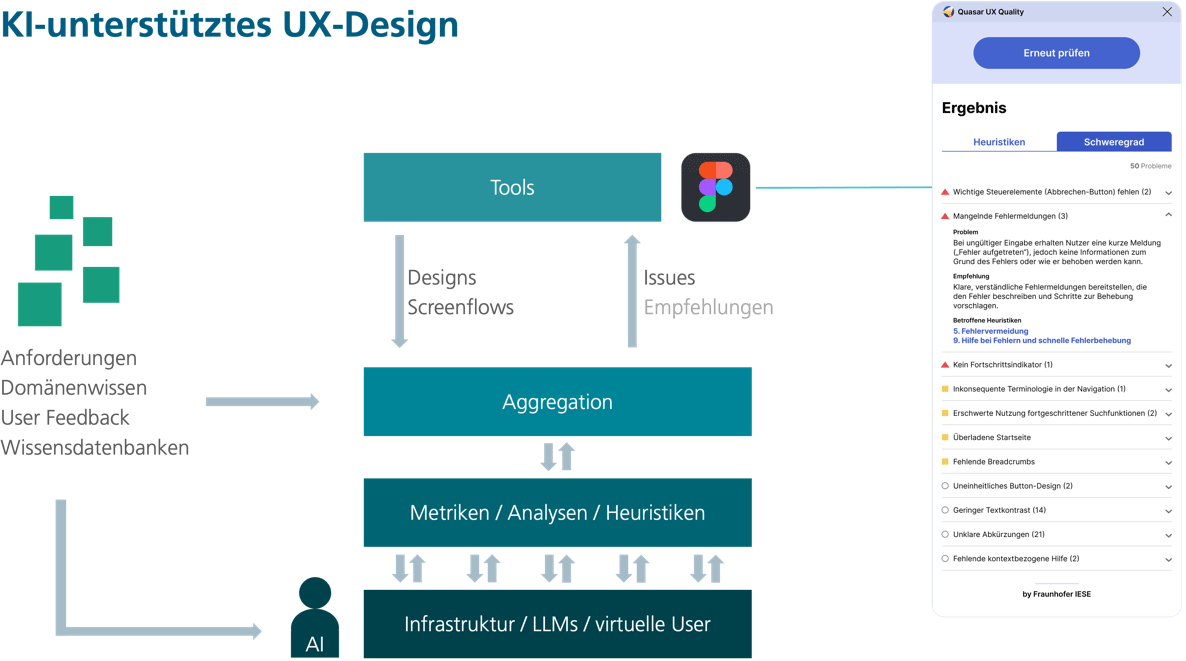For almost all software-intensive products and solutions, one of the most important success factors is user acceptance. Users are central to user-centered design, which takes their needs into account in as many design decisions as possible – especially, of course, in the design and layout of the user experience. User experience goes far beyond the design of the user interface; it influences architectural decisions and places demands on implementation. High usability and user experience can only be achieved through extensive user testing.
Efficiently supporting difficult design decisions
AI-supported UX design
With Quasar, we offer the automation of user tests through the use of artificial intelligence. This involves the use of metrics derived from standards, established heuristics, and AI language models (LLM).
Instead of waiting for a design iteration, recruiting users, performing manual tests, noting findings, deriving issues, and then making new design decisions, Quasar provides feedback from virtual user tests after each individual design decision. And it does so right where the decision is made: for example, directly in Figma, a widely used tool for UX design.
This allows you to achieve shorter iteration cycles, save on testing activities, increase the efficiency of the development process, and reduce error costs while improving the user experience.

Nevertheless, it is important that a product or solution solves a real problem and creates added value (utility). We can help you with this using our methods for digital innovation.
Some may then ask themselves, “Why should I care about user experience?” when it is primarily the actual utility of a solution that matters, not usability or user experience? The “utility-over-usability effect” describes this phenomenon. Solutions with high utility but low usability are tolerated as long as the utility is sufficiently high and there are no alternatives with similar utility and better usability. Only the absence of competition or opportunity costs prevent timely substitution. This is not a good starting point for long-term success.
Only the combination of utility and usability or user experience will make a product successful in the long term.
Read more about user testing and AI
- How AI can support software evaluation in the future [in German]
- Analyze user sentiment about a software product with User Echo Service [in German]
- Collecting information from user groups with crowd-based requirements engineering
How can expensive and time-consuming user tests in the field of user experience be supported by generative AI?

Privacy warning
With the click on the play button an external video from www.youtube.com is loaded and started. Your data is possible transferred and stored to third party. Do not start the video if you disagree. Find more about the youtube privacy statement under the following link: https://policies.google.com/privacyPatrick Mennig, head of the Digital Innovation Design department at the Fraunhofer Institute for Experimental Software Engineering IESE, will present the limitations and opportunities of AI-supported UX analysis for companies in his Cube Class at Transform 25.
[in German]
We support you in overcoming your challenges
We develop customized solutions, work with state-of-the-art technology, and are independent and neutral.
Benefit from our experience!
